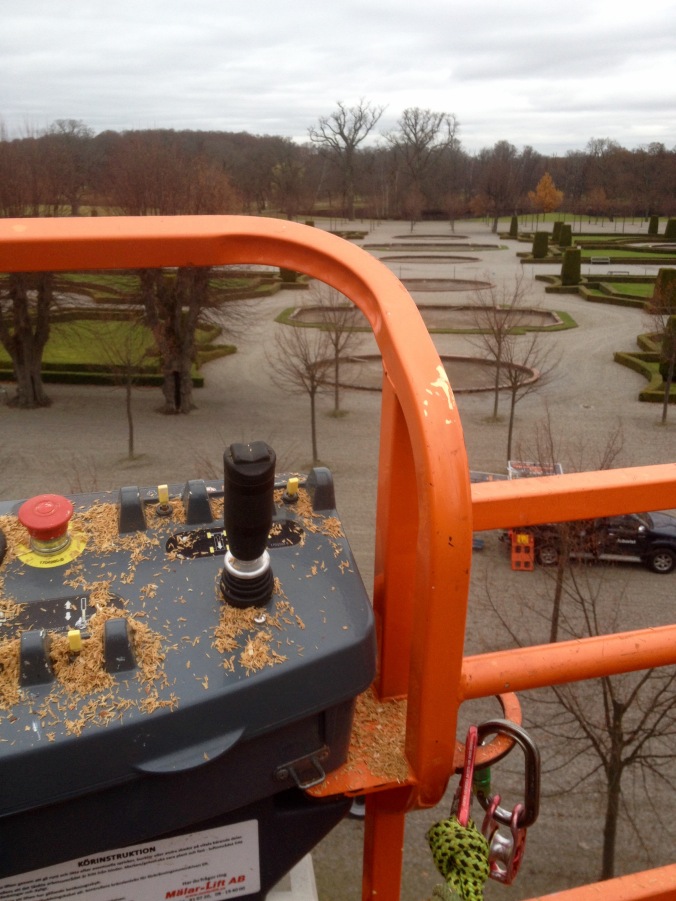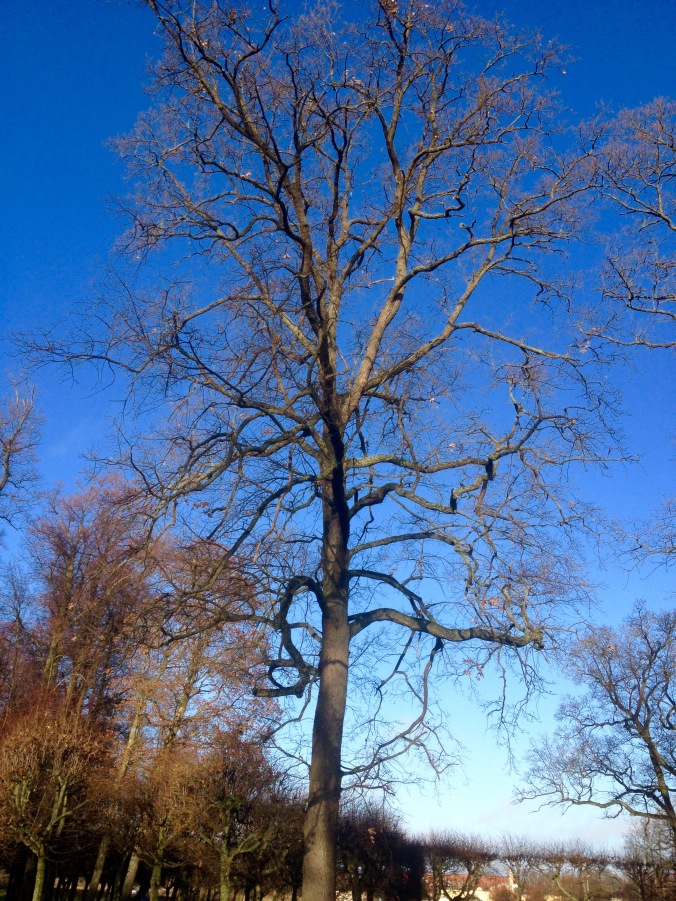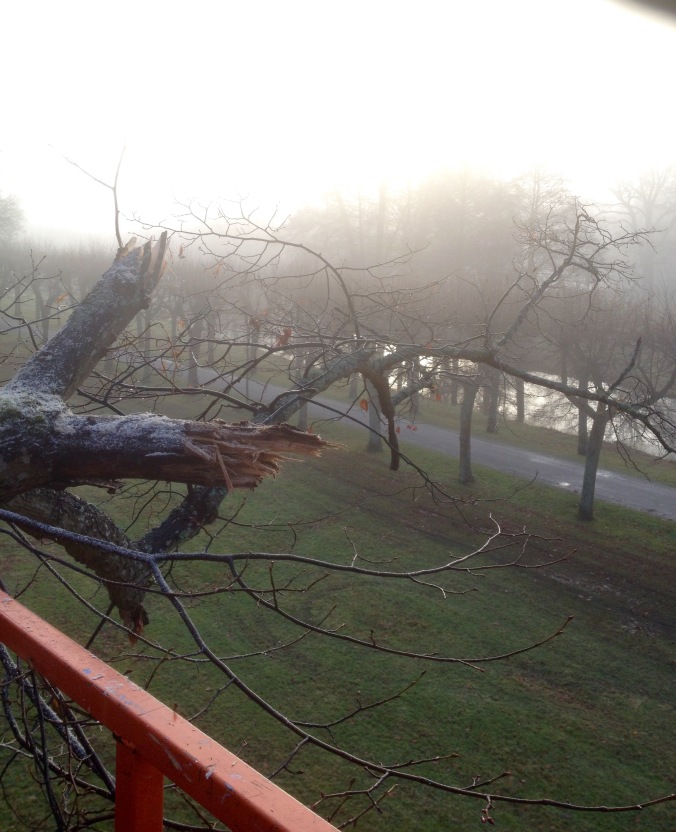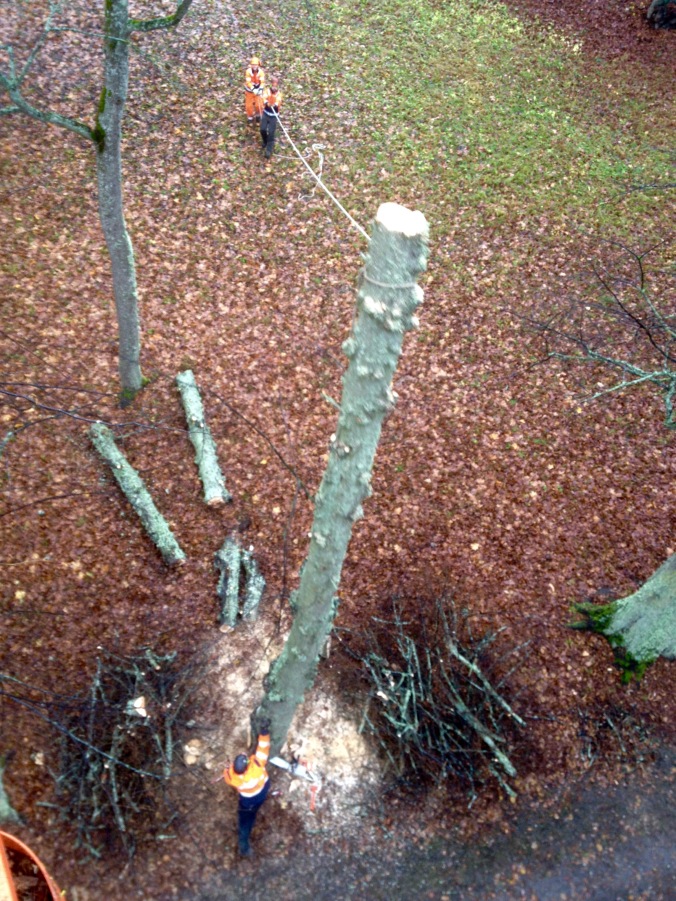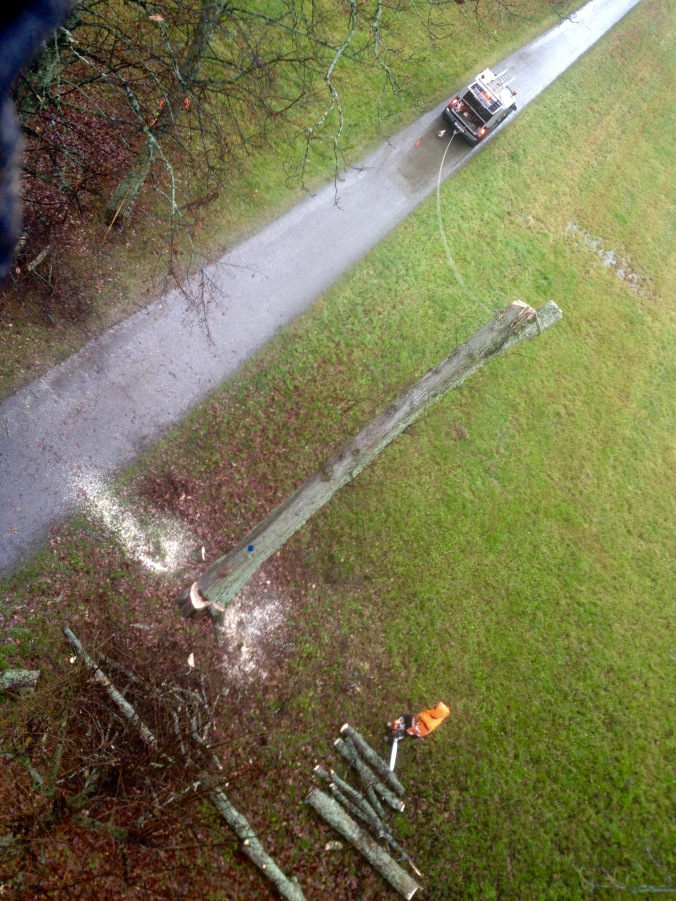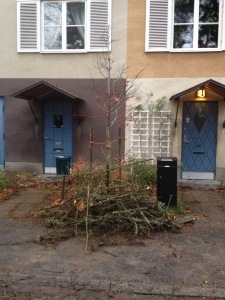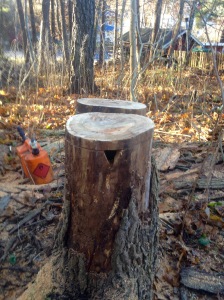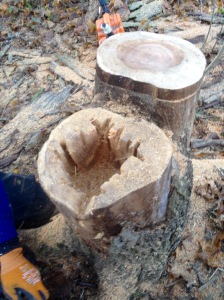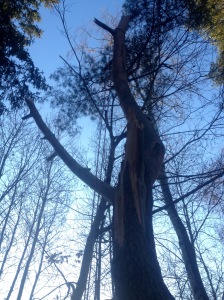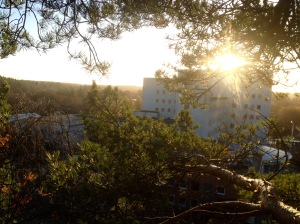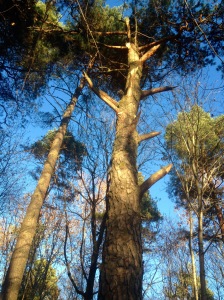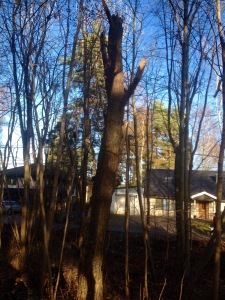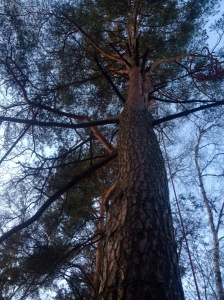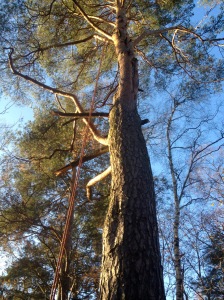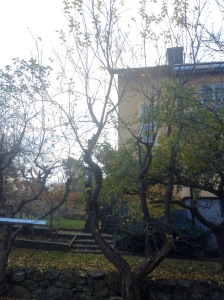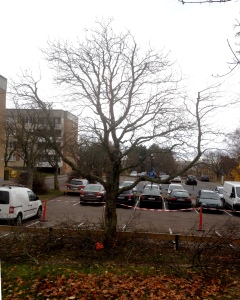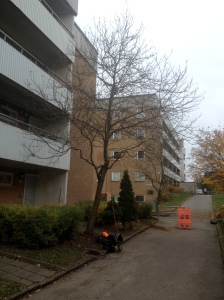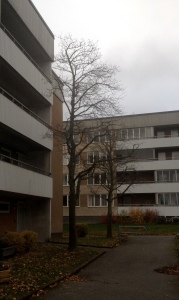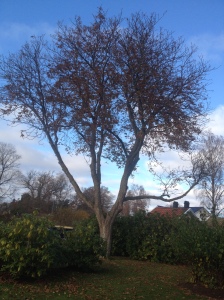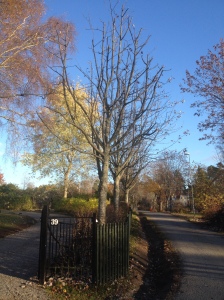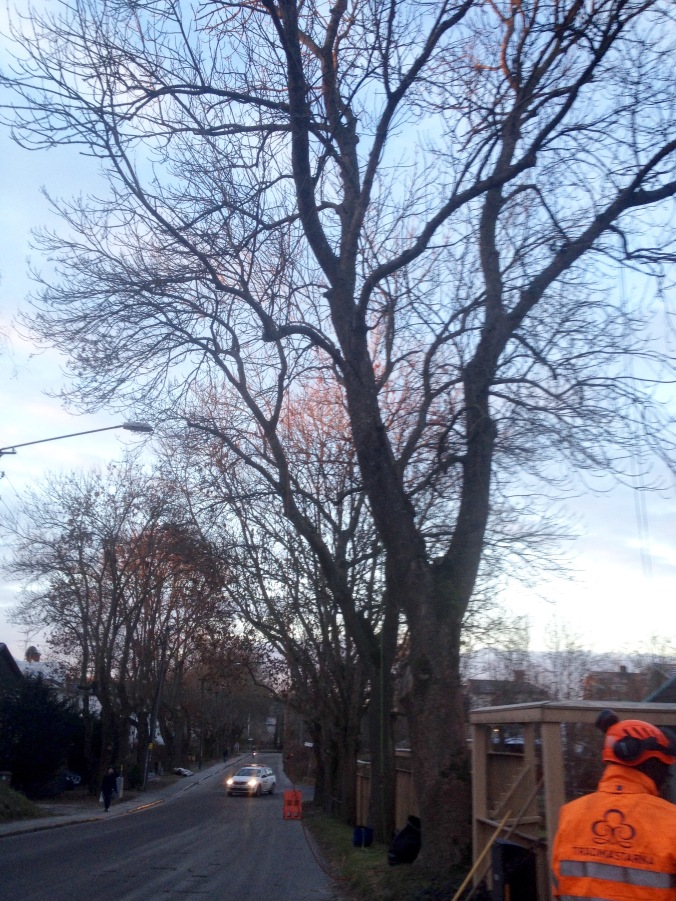
Yesterday we fought Ash dieback in some bigger trees. The owner really wants to keep them. We did our best to keep the road safe. I gave him the tip to contact 59 degrees Joe – how works with injecting microorganism into the soil around trees. He claims that he brought back vitality to ash with dieback.
I ask the customer to tell me if he got some help from 59 degrees. It would be highly interesting to see if it works. A colleague of mine says it’s just like giving the trees steroids, that the new fast and heavy growth will be heavy for the tree to bear. To me, that sounds more like the reaction you get from fertilizers. Maybe the microorganisms die off again in a couple of years, but I can’t see why healthy soil would bring the big, unstable cells in the tree tissue as too much nitrogen does.
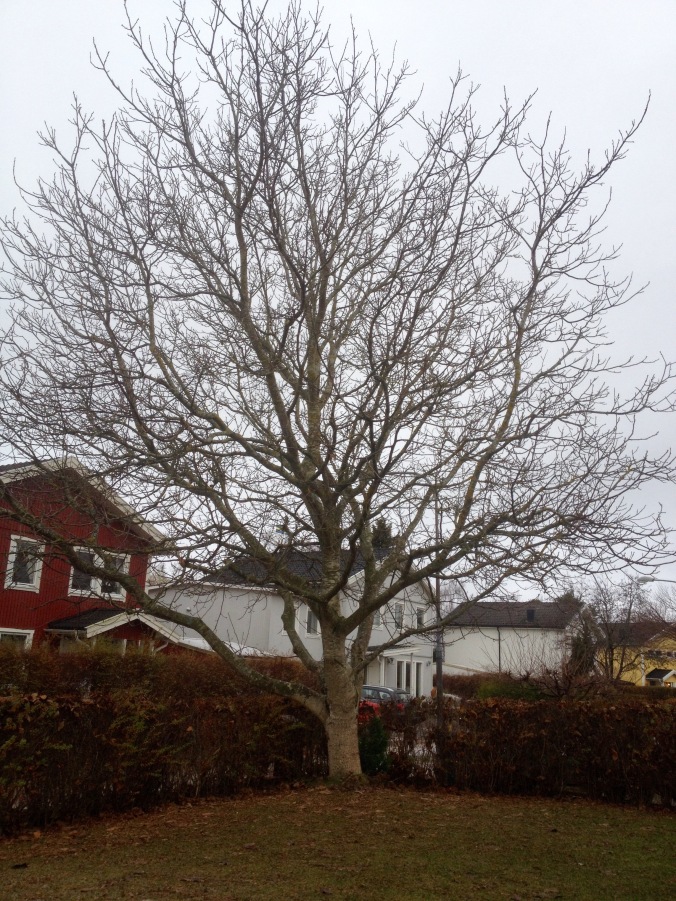
Today I pruned a walnut tree with a colleague. Before we did the reduction, I learned that walnut easily dieback after reductional pruning. We took it easy and I hope for the best. (Thinking of a heavier reduction I did to a walnut some weeks ago.) I hope I get the opportunity to come back to these trees and see how they react.
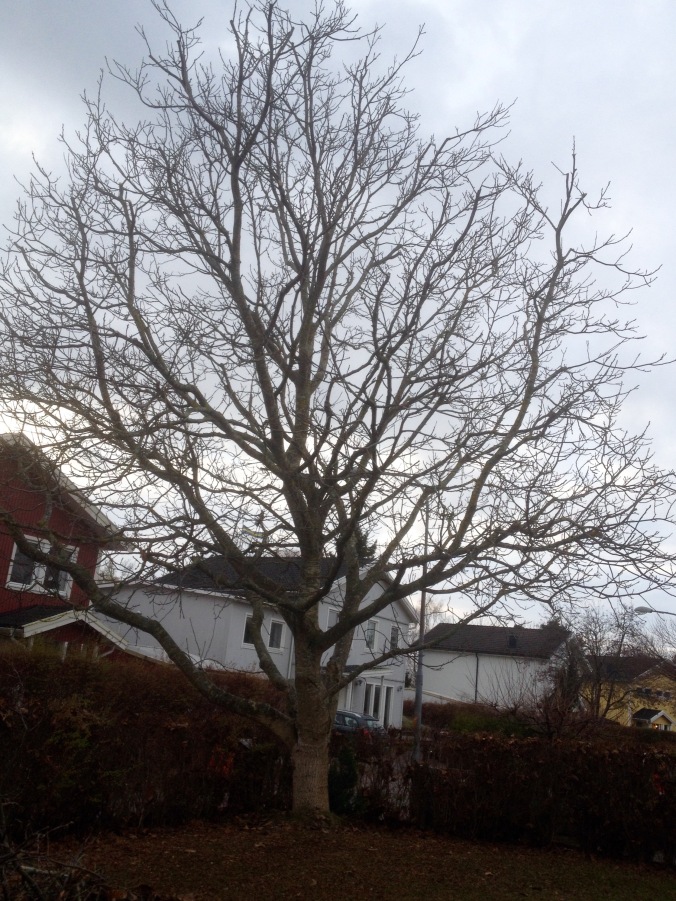
I also got back to Drottningholm and got a new answer to the bad vitality of the limes. They are all probably drowning. Before the castle was built there was a forest here. Now it’s a wet pot with some trees spread out, not enough to suck up the water.
